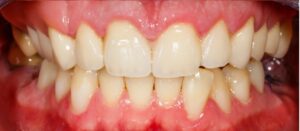
Doxycycline Monohydrate 100 mg is a commonly prescribed antibiotic known for treating bacterial infections, including acne. It belongs to the tetracycline class of antibiotics and has proven to be highly effective in reducing inflammation and bacterial growth associated with acne. If you’re considering or already taking doxycycline to treat acne or other skin issues, you’re probably wondering: How long does it take to clear your skin?
This article explores how doxycycline works, expected treatment timelines, factors that influence its effectiveness, and what to expect along the way.
What Is Doxycycline?
Doxycycline is a broad-spectrum antibiotic with both antibacterial and anti-inflammatory properties. It’s commonly used to treat:
-
Acne vulgaris
-
Rosacea
-
Skin infections caused by bacteria
-
Sexually transmitted infections
-
Respiratory tract infections
In dermatology, it is especially popular for treating moderate to severe inflammatory acne, especially when topical treatments fail to produce satisfactory results. You can also doxycycline 100 mg buy online from dosepharmacy.
How Doxycycline Works for Acne
Acne develops due to a combination of factors including:
-
Excess oil (sebum) production
-
Clogged pores
-
Bacterial overgrowth (Cutibacterium acnes)
-
Inflammation
Doxycycline addresses these problems in two ways:
-
Antibacterial Action: It reduces the number of acne-causing bacteria on the skin.
-
Anti-Inflammatory Effects: It minimizes swelling, redness, and irritation associated with acne lesions.
Because it targets the underlying causes of acne, doxycycline is considered one of the most effective oral antibiotics for acne treatment.
How Long Does Doxycycline Take to Work?
Most people begin to notice improvements in their skin within 2 to 4 weeks of starting doxycycline. However, significant and noticeable clearing usually takes 6 to 12 weeks.
Timeline Overview:
| Timeframe | What to Expect |
|---|---|
| 1–2 Weeks | Minimal change; some users may see initial flare-ups |
| 3–4 Weeks | Mild improvements; reduced redness and inflammation |
| 6–8 Weeks | Noticeable decrease in acne lesions |
| 10–12 Weeks | Significant clearing of acne |
Factors That Influence How Fast Doxycycline Works
1. Severity of Acne
-
Mild to moderate acne may improve in a few weeks.
-
Severe or cystic acne may take longer—up to 12 weeks or more.
2. Consistency in Taking Medication
-
Skipping doses or stopping early may delay results or cause acne to return.
3. Use of Complementary Treatments
-
Using doxycycline along with topical treatments (like benzoyl peroxide or retinoids) speeds up improvement and prevents bacterial resistance.
4. Skin Type and Individual Response
-
Everyone’s skin responds differently. Some people see fast results, while others need extended treatment.
What If You Don’t See Results Quickly?
Patience is essential with doxycycline. Unlike spot treatments that offer temporary relief, doxycycline works from the inside out. Dermatologists usually recommend giving the treatment at least 8 to 12 weeks before considering other options.
If there’s still no improvement after this period, your doctor may:
-
Adjust your dosage
-
Add or switch topical medications
-
Recommend hormonal treatments (especially in women)
-
Consider isotretinoin (for severe cases)
Typical Dosage for Acne
Doxycycline is available in different forms, including capsules, tablets, and delayed-release versions. Dosage often depends on the severity of your condition.
Common Regimens:
-
100 mg once or twice daily
-
Or low-dose (40 mg) once daily for anti-inflammatory effect with fewer side effects
Always take doxycycline with a full glass of water and avoid lying down immediately after taking it to prevent esophageal irritation.
Side Effects to Watch For
Doxycycline is generally well-tolerated, but like all medications, it can cause side effects:
Common Side Effects:
-
Nausea or upset stomach
-
Sensitivity to sunlight (photosensitivity)
-
Diarrhea
-
Headache
Rare but Serious:
-
Esophagitis (inflammation of the esophagus)
-
Liver damage (in long-term use)
-
Allergic reactions
To minimize side effects:
-
Take with food (unless directed otherwise)
-
Avoid excessive sun exposure
-
Stay hydrated
Can Acne Come Back After Stopping Doxycycline?
Yes, acne may return after stopping doxycycline, especially if the underlying hormonal or lifestyle factors remain unresolved. That’s why dermatologists often:
-
Limit oral antibiotic use to 3–4 months
-
Recommend transitioning to topical maintenance treatments
-
Encourage proper skincare routines
Doxycycline is usually not a permanent solution, but part of a broader, long-term acne management plan.
Tips to Improve Results While Using Doxycycline
-
Stick to a Routine: Take doxycycline at the same time every day.
-
Combine with Topicals: Use benzoyl peroxide or a retinoid to improve results and prevent resistance.
-
Don’t Pick at Acne: This can worsen inflammation and cause scarring.
-
Use Sunscreen: To prevent sunburn due to photosensitivity.
-
Eat Healthy: A diet low in sugar and dairy may reduce breakouts.
-
Follow Up: Regular check-ins with your dermatologist ensure you’re on the right path.
When to See a Dermatologist
You should consult a dermatologist if:
-
Acne worsens or doesn’t improve after 8–12 weeks
-
You experience side effects like severe nausea, allergic reactions, or unusual fatigue
-
You have signs of infection or cystic acne
Dermatologists can help tailor a treatment plan that works best for your skin type and acne severity.
Conclusion: Is Doxycycline Worth the Wait?
Doxycycline is a powerful tool in acne treatment, but it’s not an overnight fix. Most people start seeing improvements by the 4th to 6th week, with significant clearing by 12 weeks. It’s essential to stay consistent, use complementary skincare, and manage expectations.
For many, doxycycline offers a safe and effective way to regain clearer skin—just give it the time it needs to work.



